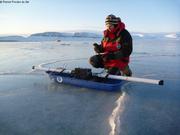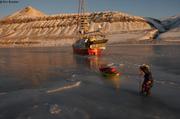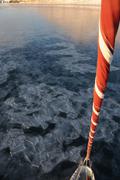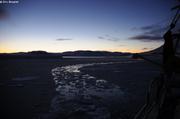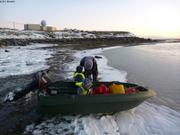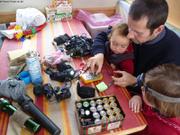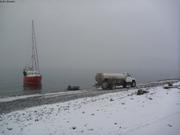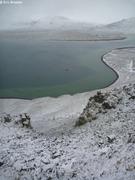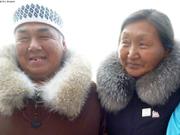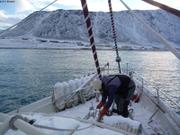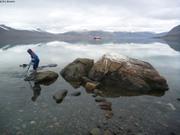Three ships stopped in Grise Fiord recently: a tanker and a cargo ship, for
their annual deliveries of fuel and supplies, and a cruise ship with about a
hundred tourists, who could watch an Inuit fashion show in the local
gymnasium. A lot of occupations for the 145 inhabitants!
Marty Kuluguqtuq, assistant senior administration officer, is suggesting us to
do a presentation of Vagabond for everyone, at the school. When there will be
less swell, we will also have to fill up our diesel tanks. Marty is happy with
the idea of having his daughter on board Vagabond once in a while, she has the
same age than Léonie!
While we wait for a new pump for our generator, and for some scientific
equipment, we have to get some more food and munitions, as well as a seal
hunting licence, to send a hard drive with all the video rushes we did during
the summer...
Jeffrey Qaunaq is leaving four of his dogs to us for the winter, as well as a
sledge and a net to catch seals which are their main food. Marly, Bella, Elvis
and a puppy with no name yet.
We are planning to be at our winter anchorage early October, before packice.
We have been invited to haul Vagabond up onto the village's beach, but the bay
we selected so far is at 45km West of Grise Fiord, at the entrance of a
beautiful fjord. We give priority to the boat's safety, the scenery,
possibilities for scientific work, and access to the village. We'll confirm
our winter location in two or three weeks!
In our search for the ideal site, we dropped anchor in Harbour Fiord, below
the cross erected by Otto Sverdrup and his companions, when they wintered on
board Fram, in 1899-1900. Magnificent place.
